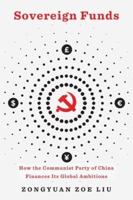Publisher's Synopsis
The Belt and Road Initiative (BRI) is an ambitious infrastructure construction program designed and financially supported by the Chinese government. It spans the globe and is active in about 150 countries, affecting the international order, government policies, and ordinary people's daily lives. The BRI uses a version of China's domestic development model, set in an international environment. Using a wealth of documents, cases, multi-country input-output models, and a project database created by the authors, this book provides a complete picture of the BRI: its benefits, risks, and implications. The book explores the institutional roots of the problems of the BRI (including debt problems), argues that the debt problem is a soft budget constraint problem, and discusses the redesign and reorganising of its future versions. This book aims to help policymakers, researchers, students, and everyone interested in political science, economics, and country-specific research to understand and rethink the advantages and risks of the BRI.










